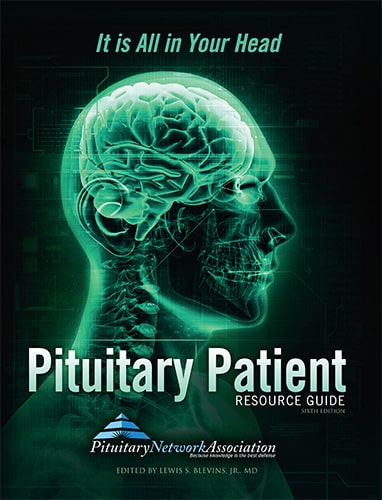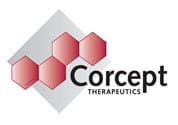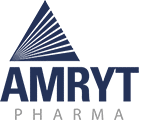THE COMPREHENSIVE RESOURCE MODEL: An Innovative Model for Post-Pituitary Treatment Wellness
The pituitary gland plays a vital role in many aspects of one’s physiology and health; consequently the vast impact of pituitary tumors and diseases is profound, significantly affecting the mind, body, and spirit. The myriad of losses and traumas that individuals experience begin long before they encounter the medical community, as they grapple with confusing changes occurring in their body, emotions, or thought process. For many, these struggles are often exacerbated as they search for the help, understanding, and answers to the puzzle of what is happening inside their body as well as externally in the medical community to which they are looking for help. Often, pituitary patients have to wait for long periods in order to receive an accurate diagnosis, simultaneously experiencing the frustration of very limited one-on-one time with physicians who are themselves working within a rigidly structured time-frame which includes daily quotas for seeing patients. This often results in a lack of attuned listening and engagement with the patient; when a patient does not feel heard this often triggers yet another internal trauma response, the origin of which is sourced in childhood attachment disruption and feelings of not being seen let alone important enough to spend that extra time with or go the extra mile.
Even as the individual recovers from successful allopathic medical treatment, there are many devastating emotional consequences such as depression, isolation, and grief related to multiple losses such as time with children, marital stress, body image, and level of functioning. Many pituitary patients experience fractures in their own family systems due to constraints and limitations in taking part in family activities and relationships . This may occur as result of poor physical health, fragile emotional states, and exhaustion.
The pituitary gland is the master gland, the link between the nervous system and the endocrine system. The impact caused by changes to various hormone levels affect the body in a myriad of ways, and the combination of these physiological dysregulations creates massive levels of stress and worry. The removal of the tumor, or other treatments, set the stage to allow the body to begin to heal. However, in affected individuals the body has, over time, incorporated these pituitary induced imbalances as its normal state, and new neuronal patterns develop in response to this dysregulation. The body then attempts to maintain this old homeostasis despite medical treatment. Following successful medical treatment, these neural maps must be reprocessed and reorganized, allowing the body to move toward health and a new state of internal “re-wiring”.
An interdisciplinary approach to treatment is imperative for post-surgery wellness to occur at the highest healing potential for the patient. Utilizing acupuncture, massage, Reiki, yoga, and somatic therapies are some examples of healing modalities which are highly beneficial in the journey to post-treatment wellness. The Comprehensive Resource Model is one such mind-body-spirit intervention which addresses the interplay between medical conditions and emotional/psychological challenges such as depression, chronic pain, and years of feeling “crazy” and misunderstood. It is difficult for a person to step into a new regime of self-care and positive thinking when so much time and energy has been invested in survival and helplessness.
Traumatic experiences, such as those experienced by individuals with these diseases, lead to a disconnection from self, other, and our own personal experience of higher purpose and meaning. Unresolved trauma shapes, influences, and limits our ability to reach the potential of our life’s purpose and personal evolution. Healing processes that promote positive neuroplasticity (meaning re-wiring the brain in the context of healthy change) and a return to healthy neural functioning are crucial in allowing individuals to re-member and return to their true selves.
It may be helpful to clarify what we mean by trauma. Many people who hear the word trauma think immediately of experiences such as war, rape, natural disaster, physical abuse, and neglect. Historically, trauma writers have referred to these as “Big T” traumas. It is important to note that seemingly “normal” life events are also significant sources of traumatic experiences, the consequences of which include negative beliefs about the self, addictions, repetitive relationship problems, depression, and anxiety. Some examples of these familiar yet painful events are illness/medical traumas, years of incorrect diagnoses, divorce, overly critical parents, adoption, invasive surgeries, bullying, and problems during gestation or birth. These are often referred to as “Little T” traumas. Similar neural mechanisms occur in response to both types of events given that profound fear/physiological freeze is at the root of both categories of traumatic experience. Have you ever had an interaction with your boss where you were overwhelmed with shame? Or been in an argument with your spouse and find yourself frozen and unable to respond? Do you find yourself behaving like a child or adolescent when things don’t go the way you expect or wish? Or maybe experience mood swings, bouts of depression, or substance use? These “symptoms” can be directly traced back to both “Big T” and “Little T” experiences, the foundation of which is unresolved or unprocessed trauma held in our nervous system. The long-term effects of this create challenges to living peacefully and with joy. Identifying when and how this was “wired in” to our nervous system is something that even “Little T” trauma survivors will benefit from exploring and resolving.
It seems, however, that many people do not consider themselves trauma survivors, or connect their everyday emotional experiences, behaviors, and relationships to the factual existence of a compromised nervous system as a result of “Little T” traumas. Survivors of pituitary disease are an example of individuals who may have experienced both types of traumatic experience. It is also important to note that any type of childhood attachment disruptions, neglect, or abuse (verbal, physical, or sexual) are the foundation for the triggers of psychological symptoms and challenges later on in life before, during, and after treatment for pituitary disease. If treatment of a pituitary patient focuses only on the events occurring during the course of their illness, a large portion of material necessary for one’s post-trauma/post-treatment wellness is unfortunately not targeted. Consequently the highest possible healing potential and return to one’s true, authentic, healthy, bright self and future is compromised. In the CRM model, the painful experiences experienced in one’s lifetime from birth through their pituitary treatment and thereafter are thoroughly addressed.
TREATMENT TARGETS
Even with the support of others (family, clinicians, etc.) the conditions for “frozen” response patterns originating in the midbrain which result in associated neocortical beliefs about the self, a “bottom up” process (Corrigan and Fay, 2014) occur. The trauma that ensues often results in the cognitive beliefs of:
1. I am going to die.
2. I do not exist.
3. I am a failure as a human being.
4. I am unloved/unlovable.
One or more of these can be present in a person; driving clinical symptoms (i.e, depression, hopelessness, panic attacks, OCD, phobias, performance blocks); dysfunctional relationships, in which “people pleasing”, co-dependence, and muddy communication are prevalent; and repetitive behaviors such as addictions. It is imperative to find and heal the source of these traumas, or obstacles to healthy living. This can be a tall order as most people experience significant survival terror/anxiety in the present when faced with the task of remembering and feeling this trauma from the past. These beliefs and memories threaten one’s safety, and the nervous system freezes into capsules that hold the memories and experiences that produced these beliefs. The body memories, emotions, and negative beliefs that many people avoid feeling at all costs, year after year, continue to have a profound impact on their well-being, including blocking the willingness and ability to love the self and others.
Therefore, conceptually, the following “Truths of our Life” are also targeted in treatment:
1. What happened (from conception to the present including all things medical)
2. What didn’t happen that should have happened (particularly in terms of secure parenting, the profound grief around not having the parents you wished you had, and the course of experiences during pituitary disease, diagnosis and treatment)
3. How your life was shaped and limited as a result (including the rage, hopelessness, and sadness regarding one’s belief that their dreams and heart’s desire are unattainable)
One can understand how important it is to process these “truths of our life” for individuals impacted by pituitary tumors and disease. Doing this allows the individual to move through and heal the many losses they have experienced which were born as a result of their illness.
Psychotherapy has evolved with the goal of enabling individuals and families to return to optimal emotional, relational, and behavioral health. Unfortunately, the methods which are most frequently employed to further this goal focus on and set intention for changing our thinking – the neocortex or cortical functioning (a “top down” process). Given that trauma, dissociation, and defense responses are activated, driven, and stored in the subcortical (thalamic, basal ganglia, and brainstem) structures (Corrigan, 2014), cognitively based modalities are limited in terms of what can be achieved regarding access, re-processing, release, and reconsolidation of traumatic material. People cannot change the way they think and feel if their midbrain is set in a response pattern that perpetuates survival of, and protection from, memories that are not experienced in a linear time frame. Furthermore, “understanding” and “reason” does not necessarily lead to healing.
Fortunately there is climate change in the therapy world. There are new and unique healing modalities that are based in the integration of mind-body-spirit. In order to clear the nervous system of its “sludge” and open the door to self-love and “God”, brain and body-based safety is imperative even if emotional safety is not initially present.
Complex Problems Require Sophisticated Resources
The multiple layers of trauma experienced by individuals suffering with pituitary diseases are complicated – and the clinical process necessary to heal this kind of unique experience is a sophisticated one, developing a scaffolding of resources that allow for complicated work to be done safely. The Comprehensive Resource Model (or CRM, developed by Lisa Schwarz, M.Ed.) is a nested modality with each resource used in a fashion that prepares the way for the next level of resource to be developed and utilized. The final goal is processing the traumatic material from a place of comprehensive neurobiological resourcing in various brain structures simultaneously. Consequently the willingness to engage in positive self-care practices is not only made possible, but is welcomed.
CRM combines a variety of fundamental somatic, relational, and spiritual methodologies to heal the trauma that prevents us from stepping into and embodying the universal resources of love, compassion, and the God energy that are internal as well as external. Seven primary resources and 4 secondary resources comprise the CRM model. Eye position is used to anchor the resources; this is key to the approach and to orientation toward the memory being done safely and gently. Few of the resources inherent in the CRM are brand new inventions. It is the combination, sequencing, flow, and nested use of these established resources that allows people to safely and fully heal without being re-traumatized. It is the construction of scaffolding resources and the process of nesting them together concurrently or sequentially throughout the healing work that is at the core of the support afforded to the person’s journey of mind-body-spirit healing through the CRM. Changes in thinking, perception, and relationship with the self are a natural consequence of this work. This kind of resourcing provides not only the feeling of safety but the physiological state of safety.
The seven primary resources are the following:
1. Three levels of attunement
2. Seven different breathing exercises
3. CRM version of “safe place”
4. Various types of Somatic grids
5. Internal Attunement/attachment behaviors
6. Target issue
7. Core Self/Authentic Self
The four secondary resources are:
1. Sound/Tones
2. Languaging
3. Generational material
4. Sacred Geometry
Given that dissociation is very common in individuals experiencing complicated medical diseases such as pituitary diseases- although to what degree varies from client to client- it is helpful to tease out the aspects of self that are responsible for “holding” these experiences and truths. Ego state work, or work with “parts” of the self, is woven throughout CRM and is an important aspect of the work. Somatic Dissociation (such as dissociation that is manifesting in chronic pain, recurring injuries, and medical conditions) are also addressed in this model.
The Comprehensive Resource Model is Body-Based
All of the CRM resources are body-based. This is a strong statement when it is recognized that individuals suffering from complex medical traumas have difficulty with being grounded and embodied, and therefore struggle with benefitting from psychotherapy and self-care practices. When a person is in a chronic state of dissociation or “freeze”, interventions which are cognitive, somatic, or spiritual do not have the chance to integrate into the functioning whole of the nervous system. The nature of the CRM work provides all of the skills and options needed to navigate the obstacles to somatic embodiment in the present moment and then uses that very same “present moment” embodiment to process and heal the wounds that created the fear of embodiment in the first place. There are two primary purposes for the use of Resourcing: 1) to access these hidden Resources and their anchoring eye positions as a place from which to process traumatic experiences and the “truth of your life” (in sessions); and 2) to activate the dormant neurobiology of the Resources themselves for day to day use into perpetuity.
The Power of Breath
The simplest (but not always easiest) resource to work with is breath. Breath is Life. Breathing with intention initiates a shift of awareness within the body’s physical, energetic, and perceptual systems providing an increased accessibility to mind-body conscious and sub-conscious processes. If one is consciously breathing they are experiencing the present moment and dissociation or disconnection is prevented. Where breath goes, awareness goes, where awareness goes, energy moves – shaking up the homeostasis of the frozen neurological wiring of emotional dysregulation. This allows for a new orientation to, and memory reconsolidation of, profound wounding.
Mindful breathing prevents dissociation, and allows for full somatic presence and movement of frozen material. Full somatic presence enables energy to move, re-membering to occur, which leads to healing. The protective genius of the brain, body, and dissociated parts of self “know” that to remember in body-mind-spirit is to heal—and for many wounded clients, healing is perceived by these protective aspects of self to be threatening, dangerous, disloyal, and unconsciously undesirable despite conscious adult thinking. Consequently, breath and the resulting somatic embodiment is not only not perceived as a resource by the client, but is in fact “known” to be dangerous and therefore avoided.
So how do we work with the parts of us who are afraid to notice their breathing, afraid to be in their body in the present moment, and afraid to heal? Stepping into the obstacle, in this case the fear and the part of us that holds that fear is necessary. Validating and inviting understanding of the fear of embodiment and healing is the starting point. This also provides opportunity for relational attunement within the client, between client and therapist, and enhanced co-consciousness, (meaning awareness of separate aspects of self which may be fighting for control or operating simultaneously.) It is necessary to be cognizant that the parts of self who prevent mindful breathing and drive dissociation also happen to be the parts who need much attention and love. Inviting these aspects of self to verbally speak about or manifest their story through somatic distress or disturbance in order to be “seen” or verified is the first step. Loving these parts of self in creative and non-threatening ways facilitates the clearing of barriers to healing.
Tools for Support Between Sessions
While the processing of profound traumatic experiences is best supported and accomplished with a trained clinician, the CRM model also provides exercises and tools for clients to use at home for self-care practices in preparation for the facilitation of positive neuroplasticity and healing.
The following is an example of CRM practices that can be used during the session with a therapist or at home for self-care.
- When feeling distressed, activated, or “symptomatic”, notice the experience in your body (where, sensations experienced, movement, etc.).
- Now scan through your body and notice where you feel the most grounded, solid, centered, and present.
- Find the eye position that anchors this sense groundedness in your body. Keep your eyes on that eye position throughout the exercise. This is achieved by allowing your eyes to roam until you find the specific position where the sense of connection is enhanced or anchored.
- Begin breathing in through your feet from deep in the earth, through all of the layers of the earth into your heart while simultaneously breathing in through the crown of your head from the sky/heavens into your heart.
- Hold that breath in your heart, filling every nook and cranny of your heart with breath.
- Exhale out the front and back of your heart at the same time, intentionally sending the exhale breath to the part of your body that holds this experience.
- Continue this “heart breathing” to the wounded, distressed area as long as possible.
- It is also very helpful to alternate heart breaths so that the exhale is sent to the wounded area for a few breaths then to the grounded area for a few breaths, allowing this pattern to continue for several minutes.
- Allow yourself to return to the original distressing issue and notice your experience of it now.
- Notice what happens in the body, in the eyes of the wounded ?(was self) and allow for a “New Truth” to come to the surface (New Truth can be a word, a sentence, a sound, or a body sensation).
- Say or sound the New Truth six times out loud, finding the corresponding body sensation to that New Truth, and find the eye position that enhances it.
- Notice what geometric shape and color is associated with this and imagine every cell in your body enclosed in this colored shape.
- Make the sound or tone that goes with the New Truth, breathe in the colored mist that goes with this New Truth, and heart breathe again multiple times to both the adult and wounded self.
In the case of the above practice, the New Truth allows for somatic and cognitive embodiment of the shift that occurs through internal nurturing of the wounded self. Over the course of actual therapy, there are New Truths that come from each session and which benefit the client greatly when practiced day to day by returning to the New Truth eye position and simply allowing the shift to deepen in the brain and body through breath, shapes, and color.
Teaching Self-Sufficiency
CRM does not give clients fish, it provides the tackle box from which to become self-sufficient. The fact that CRM skills can be practiced anywhere, anytime, outside of session is empowering and enhances the depth and speed of true healing.
In CRM, the nested or layered conceptualization and use of resources is a flexible and “forgiving” model and all of the components of the model should be taught to the client for use at home between sessions and when the client is no longer in therapy. The individual resources as well as the model as a whole stands on its own or can be used during any and all types of psychotherapeutic models including Cognitive Behavioral Therapy, Psychodynamic psychotherapy, EMDR, AEDP, Somatic Experiencing, Sensorimotor Psychotherapy, Clinical Hypnotherapy, Internal Family Systems, Brainspotting, and many others. The model can also be used adjunctively with other alternative healing modalities such as therapeutic massage, Reiki/energy therapy, acupuncture, physical therapy,and yoga. This is the beauty of the model: it includes effective tools similar to many modalities, and each resource within CRM can be used with any other type of healing work. It is a streamlined model in which deep healing occurs quickly and gently, with enduring results. Work is done from the time of conception through the present and may include methods for working with generational trauma out of the realm of the client’s conscious knowledge. This is a heart-centered approach in which clients are guided to re-member who they really are and to learn to embody this true spiritual essence in their day-to-day lives.
For more information about the Comprehensive Resource Model, please visit www.comprehensiveresourcemodel.com or contact Lisa Schwarz at jc**********@ya***.com.
Corrigan, F.M. Threat and safety: the neurobiology of active and passive defense responses, pages 29-50, in Eds Lanius, U.F., Paulsen, S.L, Corrigan, F.M. “Neurobiology and treatment of traumatic dissociation: toward an embodied self”. Springer, New York, 2014
Corrigan, F.M., Wilson, A., Fay, D. Attachment and attachment repair, pages 193-212, in Eds Lanius, U.F., Paulsen, S.L, Corrigan, F.M. “Neurobiology and treatment of traumatic dissociation: toward an embodied self”. Springer, New York, 2014
Ross, Colin, Halpern, Naomi. Trauma Model Therapy, pages 56-59. Manitou Communications, 2009.
Lisa Schwarz, M.Ed. is a Pennsylvania state licensed psychologist, consultant, and international educator working in private practice in Pittsburgh, Pennsylvania and Beulah, Colorado. She is the developer of The Comprehensive Resource Model (CRM) and has spent the past 20 years dedicating her work to creating innovative methods for working with dissociative disorders, attachment disorders, and gestational trauma.
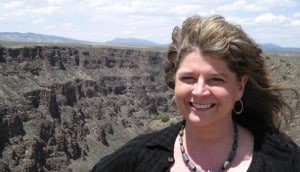
Lisa Schwarz, M.Ed.
Lisa Schwarz, M.Ed. is a Pennsylvania state licensed psychologist, consultant, and international educator working in private practice in Pittsburgh, Pennsylvania and Beulah, Colorado. She is the developer of the Comprehensive Resource Model (CRM) and has spent the past 20 years dedicating her work to creating innovative methods for working with dissociative disorders (including medical/somatic dissociation), attachment disorders, and gestational trauma. She is a certified Trauma Model practitioner from the Colin Ross Institute, is certified in Ruby Gibson’s Somatic Archaeology, Robert Schrei’s Sourcepoint Therapy, and practices Usui Reiki. Lisa was the Senior Brainspotting trainer in the United States from 2007-2014 until choosing to focus solely on the development of CRM. Lisa’s clinical work and teaching provides a combination of psychotherapy, neuroscience, and spirituality in facilitating holistic healing from traumatic events, medical conditions, and the interaction between these two truths of one’s life. The belief that there is a correlation between pre-natal, pre-verbal, and childhood attachment disruptions and the type, severity, and duration of medical conditions in adulthood is a catalyst for the development of Lisa’s work. She has specific experience in working with survivors of pituitary tumors before, during, and after allopathic medical treatment to help in alleviating obstacles to well-being and joy.
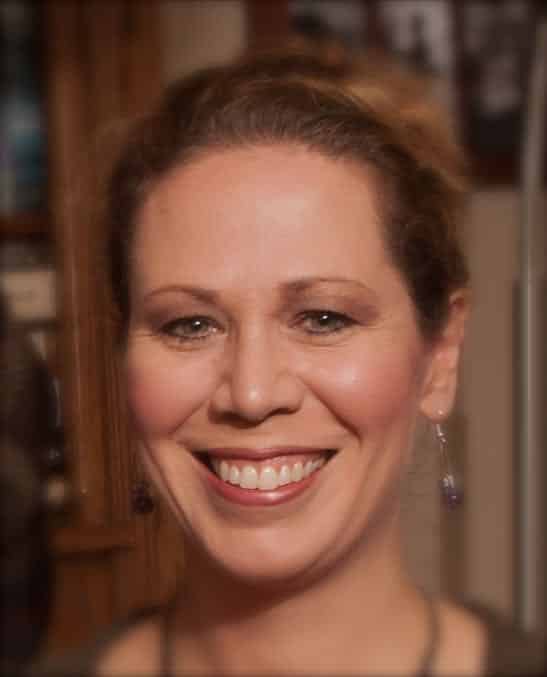
Heather Hart Kennedy, MSW, LCSW
Heather Hart Kennedy, MSW, LCSW is a psychotherapist and consultant working in private practice in Milwaukee, Wisconsin. She has 22 years of clinical experience and has practiced in a variety of settings, including medical centers such as Shenandoah Community Health Center and The University of North Carolina School of Medicine, Department of Family Medicine, where she integrated treatment approaches addressing the many areas of individuals’ lives that are impacted in medical and disease processes. She has been trained in a variety of modalities including The Comprehensive Resource Model (CRM), EMDR, and Brainspotting, as well as incorporating other somatic interventions into mind-body-spirit wellness. She has expertise in treating the impact and interplay of a wide variety of medical conditions, PTSD, complex PTSD, as well as mood disorders and spectrum issues.

